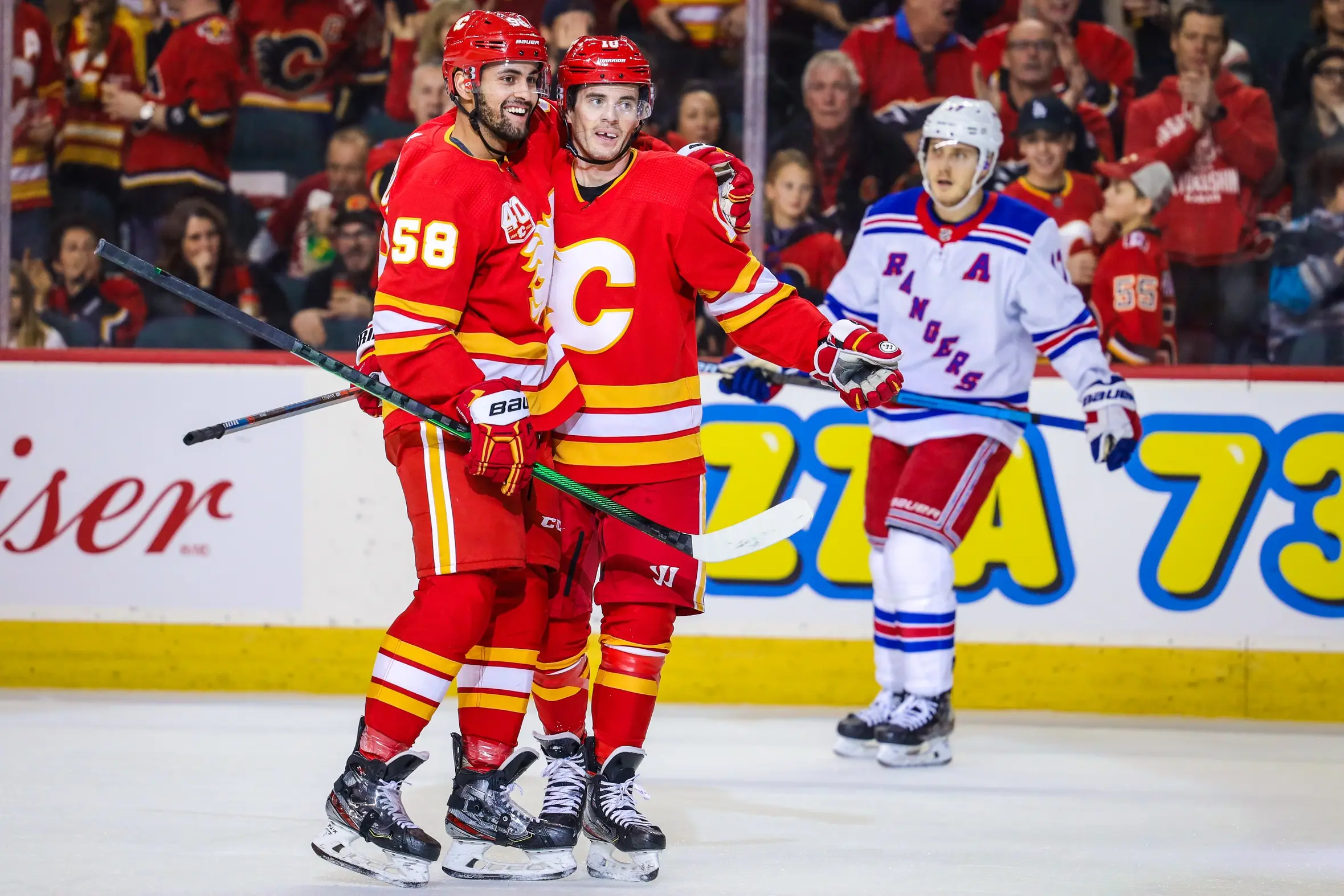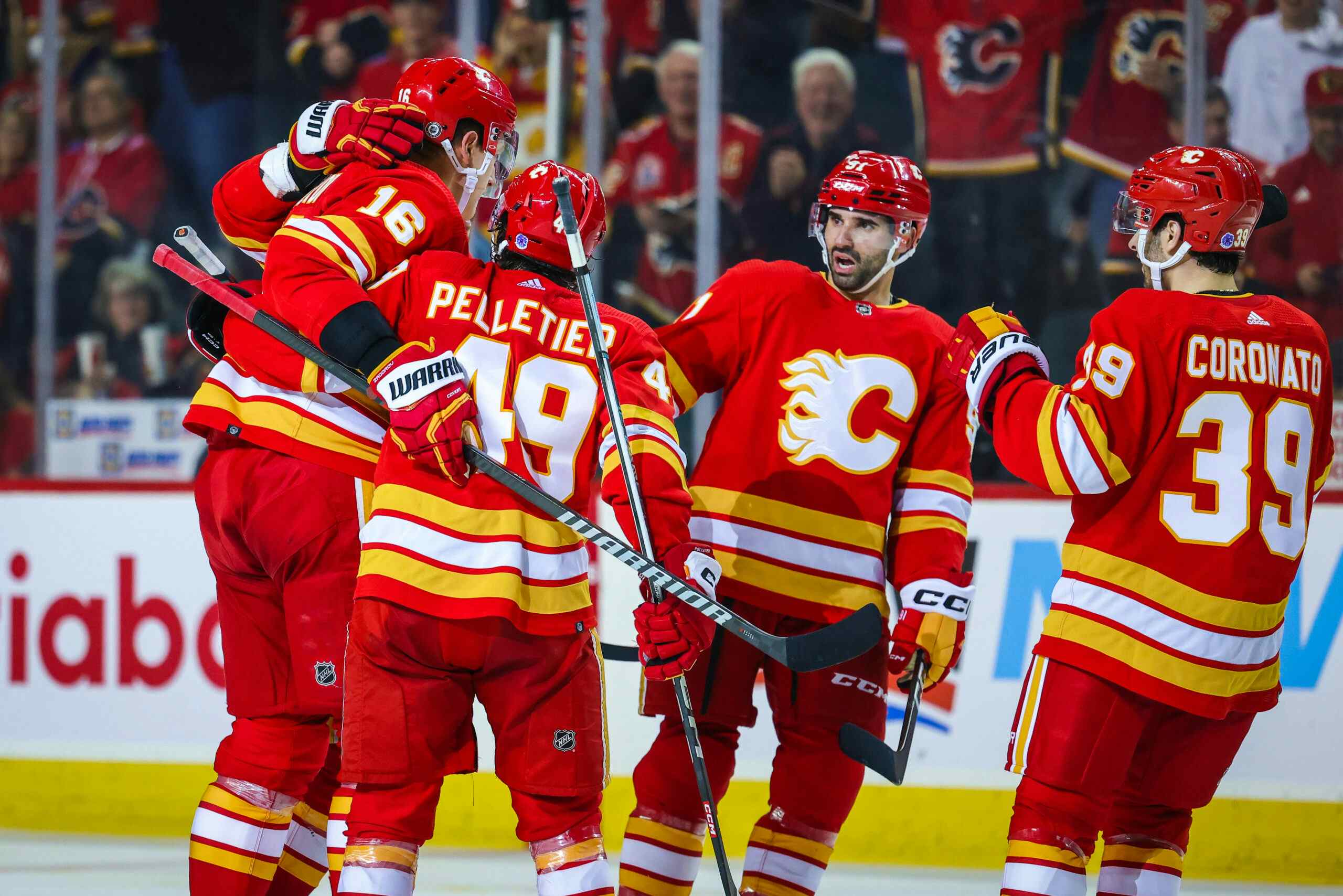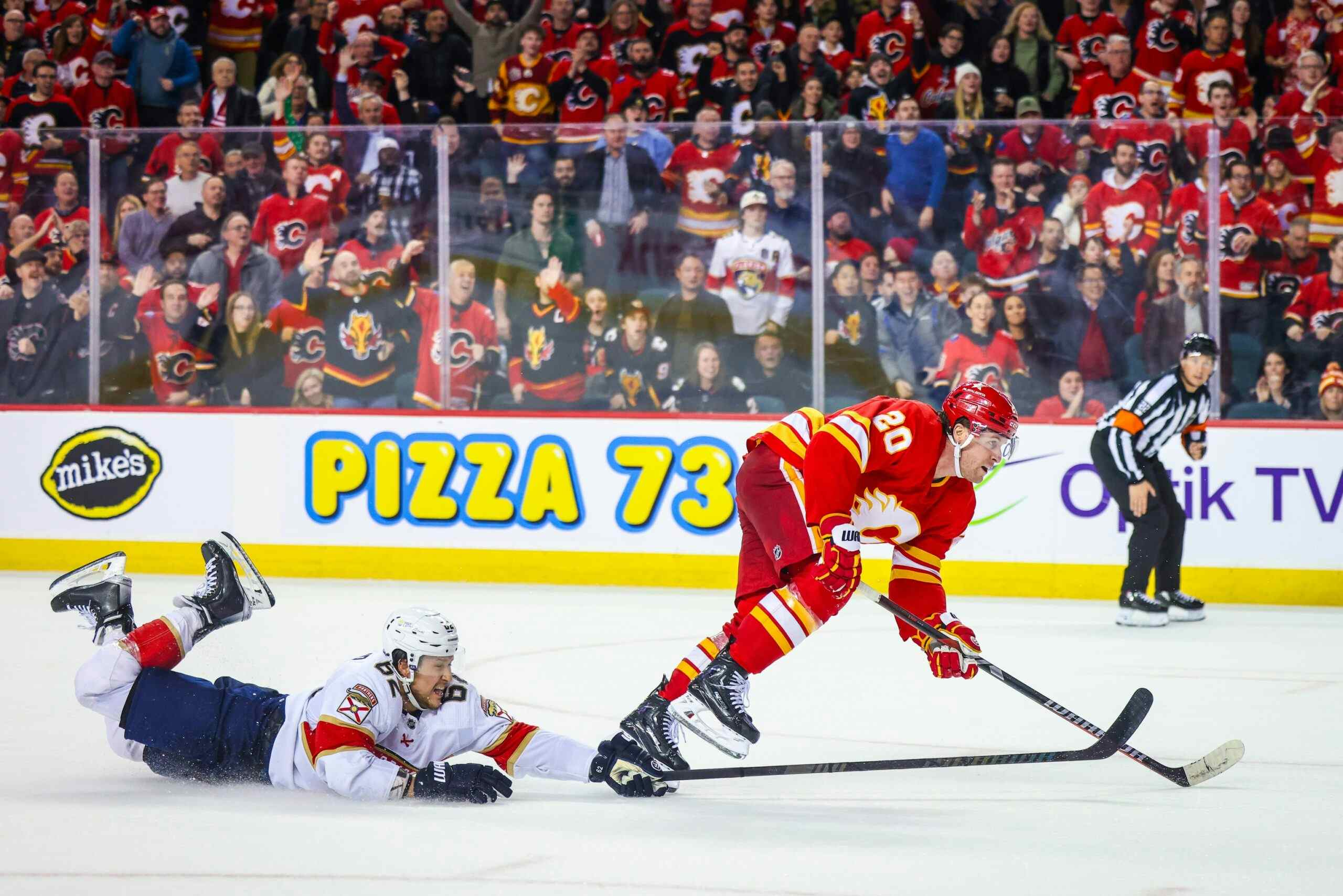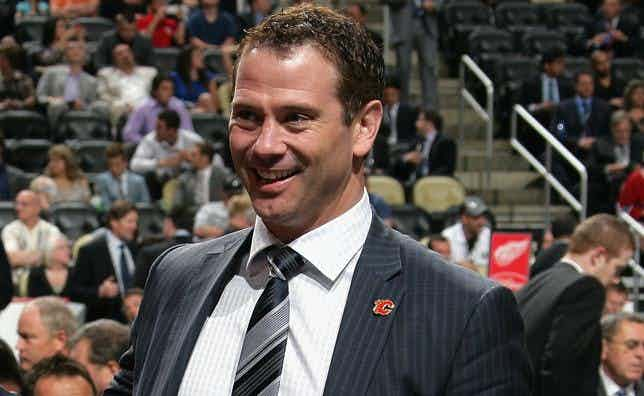The Flames should not trade Oliver Kylington

By Mike Gould
3 years agoIf there’s one thing that Calgary Flames general manager Brad Treliving loves to do, it’s acquiring depth defensemen when his team is in contention at the trade deadline.
In 2015, Treliving snagged David Schlemko on waivers from the Dallas Stars. Two years later, he brought in Matt Bartkowski on a tryout from the AHL’s Providence Bruins and signed him a day later, also adding right-handed rearguard Michael Stone in a trade with the Arizona Coyotes.
Fast-forward another two years, and, reluctant to mess with the chemistry of the first-place 2019 Flames, Treliving made L.A. Kings depth defender Oscar Fantenberg his big deadline acquisition. Treliving returned to that well again the next year, bringing in the rugged Derek Forbort in another trade with L.A. and subsequently spending another draft pick to add power play quarterback Erik Gustafsson.
The Flames have made the playoffs four times under Treliving’s watch. In each of those four years, Treliving made a move in February to bolster his depth on the back-end (well, the Flames claimed Schlemko on Mar. 1, 2015, but he was waived on Feb. 28, so we’ll let it slide).
Sure, the Flames didn’t have to give up any assets to acquire Schlemko or Bartkowski, but the rest of these players came to Calgary at a tangible cost. Stone cost the Flames third and fifth round picks. Forbort and Fantenberg both fetched fourths. The price for Gustafsson? Another third.
These picks may not seem all that valuable, but they add up, particularly when consistently traded to bring in players with relatively average impacts on the game. Players like Fantenberg, Forbort, and Stone are often available for no acquisition cost deep into the NHL’s unrestricted free agency period—so why give up assets to get them more than halfway through the final years of their contracts? Under Treliving, the Flames have shown a strong ability to identify talented players in late rounds, but they often end up going into the NHL Draft with as few as five picks. They did so in 2015, 2017, 2018, and 2019.
I only bring all this up because the Flames are currently locked in a contractual impasse with a developing young defenseman who, over the last two years, has been relegated almost exclusively to the press box from March onwards by these costly trade deadline acquisitions. This unsigned player in question is Oliver Kylington, the 60th pick from the 2015 NHL Draft who has fared reasonably well in his own end while playing very sheltered minutes thus far in his 87 game NHL career.
As a prospect, Kylington’s calling card was his dynamic skating and offensive smarts. He’s got tremendous wheels and a great shot, but the scoring hasn’t really developed yet for him. The Flames didn’t generate much of anything in the offensive zone with Kylington on the ice last year despite him getting very favourable offensive zone deployment. With Kylington on the ice at even strength, the Flames averaged 53.52 shot attempts/60 (third-worst of any Flames regular) and mustered just 2.16 expected goals for/60 (fourth-worst).
Still, not many 22-year-old defensemen play NHL games. Even fewer can score with any sort of consistency. That said, despite his relative lack of offensive impact, Kylington is providing the Flames with tangible value in his own zone. Sure, he played against pretty weak competition (the quality of the players he faced ranked in just the sixth percentile league-wide, according to player rating visualizations created by hockey analytics analyst JFresh). So did Brandon Davidson, who faced even weaker competition but whose defensive results in his relatively short time as a Flame ranked among the worst on the team.
Meanwhile, Kylington fared reasonably well in his own zone last season. The Flames allowed 2.43 goals/60 with him on the ice, a figure pretty comparable to the results of TJ Brodie (2.41 GA/60) and Rasmus Andersson (2.29 GA/60) and much better than those of Noah Hanifin (2.84 GA/60) and Travis Hamonic (3.35 GA/60). And Kylington got kind of unlucky with those results: his expected goals against/60 figure, based on the quality of the shot attempts the Flames allowed with him on the ice, averaged out to 2.25, fourth-best among the Flames’ seven regular defenders.
Much like Brodie before him, Kylington has become a target of criticism at times for defensive miscues. Still, this is a player who is entering his age-23 season with a decent body of work as a competent, NHL-calibre presence in his own zone with the tools to become a good two-way defenseman. He has experience playing on both the left and right side.
In October, my colleague Ryan Pike asked the question of where Kylington fits in the Flames’ lineup. He’s no longer exempt from waivers and it’s almost a certainty that he’d be claimed if the Flames sought to return him to Stockton. With Mark Giordano, Andersson, Hanifin, Juuso Valimaki, and Chris Tanev destined for spots in the team’s top-six, Kylington, Nikita Nesterov, Connor Mackey, Alex Petrovic, and Alexander Yelesin seem set to battle it out for the remaining two spots.
Right now, Kylington and Nesterov would seem like the safe bets to make it out of camp (whenever it happens), although Kylington might not even be there if his contract stalemate isn’t further addressed. Right now, it’s easy to see parallels between Kylington’s situation and how Brett Kulak’s tenure with the Flames ended on the eve of the 2018-19 season. Kulak fell victim to the numbers game in Calgary and ended up losing his spot on the team (despite Stone, ahead of Kulak on the depth chart almost by default due to his $3.5 million contract, being worth demonstrably less on the ice).
The Flames shipped Kulak off to Montreal for Rinat Valiev and Matt Taormina on Oct. 1, 2018, right after they returned from China. Less than two months later, Kulak’s replacement, Juuso Valimaki, suffered a high-ankle sprain that kept him out of action from Nov. 23 to Apr. 1, 2019. That injury opened the door for Kylington to step in, but Kulak quickly established himself as an important player with the Canadiens and continued to play very good hockey in both zones in 2019-20. Neither Valiev nor Taormina remain in the organization.
Kylington’s results thus far haven’t been as strong as Kulak’s were in Calgary. That said, Kulak had only played 24 games with the Flames by his 23rd birthday. Kylington has over three times as much experience and, with all due respect to Connor Mackey, the Flames don’t have anything close to the same level of defensive prospect depth that they did when they moved Kulak. Before the 2018-19 season, the Flames had Andersson, Valimaki, and Kylington all pushing for spots in the lineup. Now, that group of bubble guys behind Kylington is comprised of a good NCAA prospect in Mackey, a couple of veteran journeymen in Nesterov and Petrovic, and a guy in Yelesin who needs to have a big year just to keep his spot in the organization. With Jérémie Poirier and Yan Kuznetsov still years away, there’s not a ton of upside on the farm.
Right now, the Flames need to focus on getting Kylington signed. With Mark Giordano drawing ever closer to 40 years old and Noah Hanifin’s ceiling uncertain with a large body of work already behind him, the Flames should be keeping as many of their high-upside guys in the fold as possible. With Hanifin, Valimaki, Andersson, and Kylington all in the lineup, the Flames have a solid young core of defenders who can help them now and, potentially, in the future. It’s time for the Flames to give Kylington a consistent partner—probably Juuso Valimaki—and some slightly tougher assignments to work with. It’s pretty hard to develop a player from the press box, but the Flames have opted to relegate Kylington to the sidelines after the trade deadline for the past two seasons, keeping him out of playoff games in favour of unremarkable short-term options.
If Kylington doesn’t progress, maybe it’ll be time to cut bait. But that time isn’t here yet. Kylington has the upside to be a good two-way defenseman at the NHL level, but he’ll never realize that potential in Calgary if he isn’t given anything to work with. He’s already shown that he can post solid defensive results against lesser NHL competition but it’s now time to kick things up a notch.
Instead of constantly pushing him aside for costly reinforcements, the Flames should try letting Kylington carry some more weight on a regular basis.
Recent articles from Mike Gould





